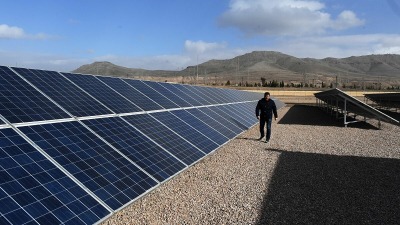More than two years have elapsed since the Syrian Ministry of Electricity agreed with a consortium of Emirati companies to establish a photovoltaic station in the countryside of Damascus. Despite the stipulated implementation period of two years according to the agreement, the official announcement only materialized in November 2021.
The ministry affirmed that the project will be situated in the Wadi al-Rabeeh area adjacent to the Tishreen power station in the Damascus countryside, boasting a capacity of 300 megawatts. As per the agreement, full financing of the project, amounting to 100%, was secured through a ten-year quarterly payment plan, to be disbursed following the operationalization of each section of the facility.
However, the project remains unrealized, and neither party has issued an official statement elucidating the reasons behind the delay. Economic and political researcher Mohammed Saleh al-Fatih noted that reports about the withdrawal of the project by UAE companies surfaced as leaks from the Ministry of Electricity. Despite the ministry neither confirming nor refuting this information, significant questions linger regarding the project’s non-execution.
Fatih emphasized the pivotal role of borrowing in facilitating infrastructure projects, stressing the necessity for financial feasibility to ensure loan repayment or political coverage for financing shortfalls. While every project must yield a financial return sufficient to cover construction and maintenance expenses, a report from the International Renewable Energy Agency (IRENA) indicated that the average cost of generating electricity from solar energy stands at 5 US cents per kilowatt-hour. Considering the diminishing costs with increased utilization of local components, Fatih highlighted that the planned plant was designed to employ imported components and be constructed by a foreign entity, with loan repayment stretched over a decade, though specifics regarding the loan’s interest rate remain undisclosed.
Regarding the financial aspect, Fatih elaborated that with a capacity of 300 megawatts, the cost of constructing one megawatt of photovoltaic plants typically ranges between $900,000 and $1.1 million, averaging at around $1 million. Consequently, the projected cost of the entire venture is estimated to hover around $300 million. Assuming an annual interest rate of only 5% on the $300 million repaid over ten years, the annual payment would approximate $44 million.
Such figures imply that the electricity price for Syrian consumers would need to be exceedingly high, rendering the project financially unfeasible. Fatih further contended that the imposition of US sanctions on Syria’s energy sector, known approximately two years before the plant agreement, should not have come as a surprise, particularly given the involvement of a prominent Emirati conglomerate. He also remarked that the government’s purported interest in renewable energy projects has yet to manifest tangibly in Syria’s electricity landscape.
This article was translated and edited by The Syrian Observer. The Syrian Observer has not verified the content of this story. Responsibility for the information and views set out in this article lies entirely with the author.


